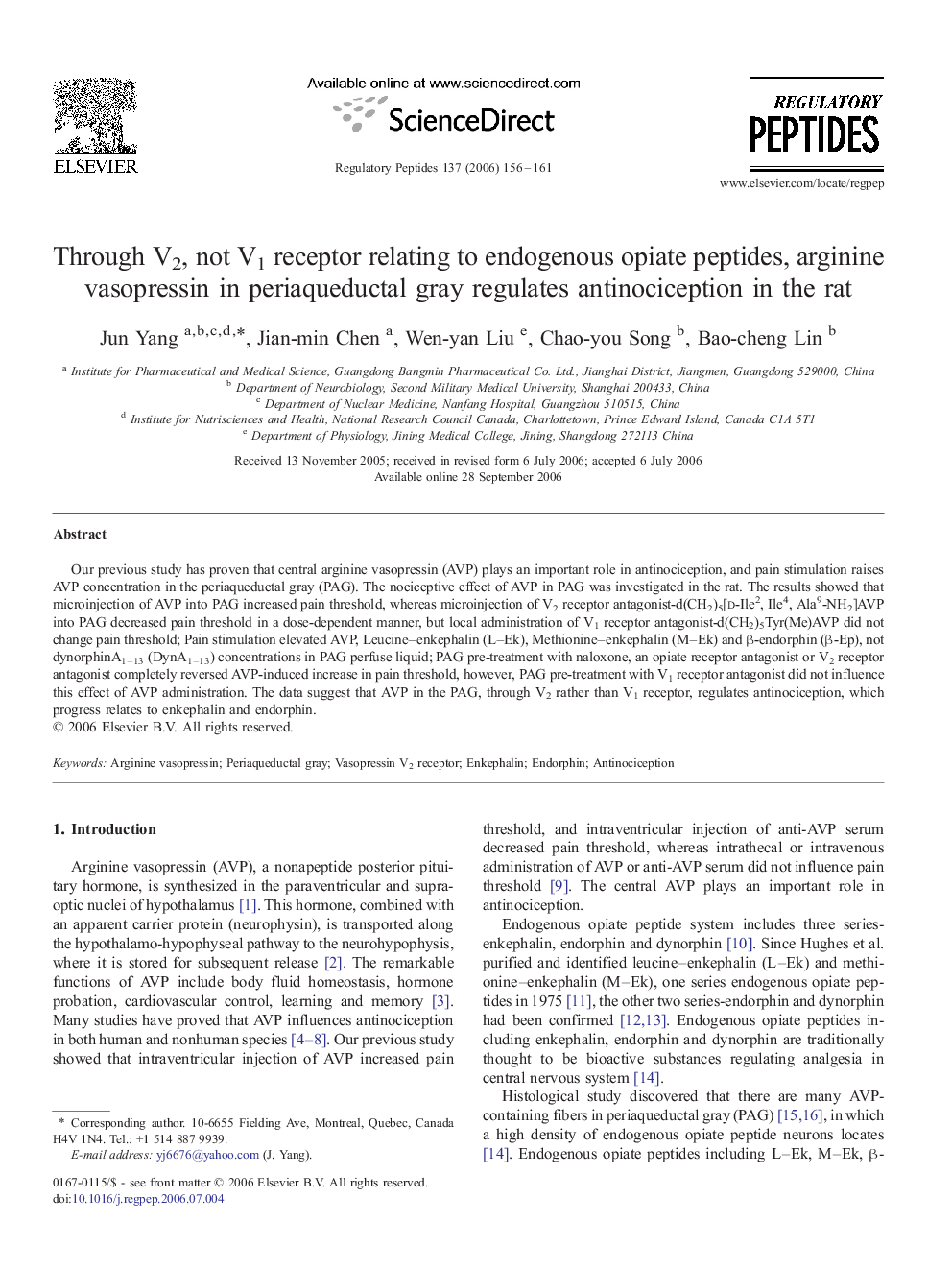| Article ID | Journal | Published Year | Pages | File Type |
|---|---|---|---|---|
| 2023535 | Regulatory Peptides | 2006 | 6 Pages |
Our previous study has proven that central arginine vasopressin (AVP) plays an important role in antinociception, and pain stimulation raises AVP concentration in the periaqueductal gray (PAG). The nociceptive effect of AVP in PAG was investigated in the rat. The results showed that microinjection of AVP into PAG increased pain threshold, whereas microinjection of V2 receptor antagonist-d(CH2)5[d-Ile2, Ile4, Ala9-NH2]AVP into PAG decreased pain threshold in a dose-dependent manner, but local administration of V1 receptor antagonist-d(CH2)5Tyr(Me)AVP did not change pain threshold; Pain stimulation elevated AVP, Leucine–enkephalin (L–Ek), Methionine–enkephalin (M–Ek) and β-endorphin (β-Ep), not dynorphinA1–13 (DynA1–13) concentrations in PAG perfuse liquid; PAG pre-treatment with naloxone, an opiate receptor antagonist or V2 receptor antagonist completely reversed AVP-induced increase in pain threshold, however, PAG pre-treatment with V1 receptor antagonist did not influence this effect of AVP administration. The data suggest that AVP in the PAG, through V2 rather than V1 receptor, regulates antinociception, which progress relates to enkephalin and endorphin.
